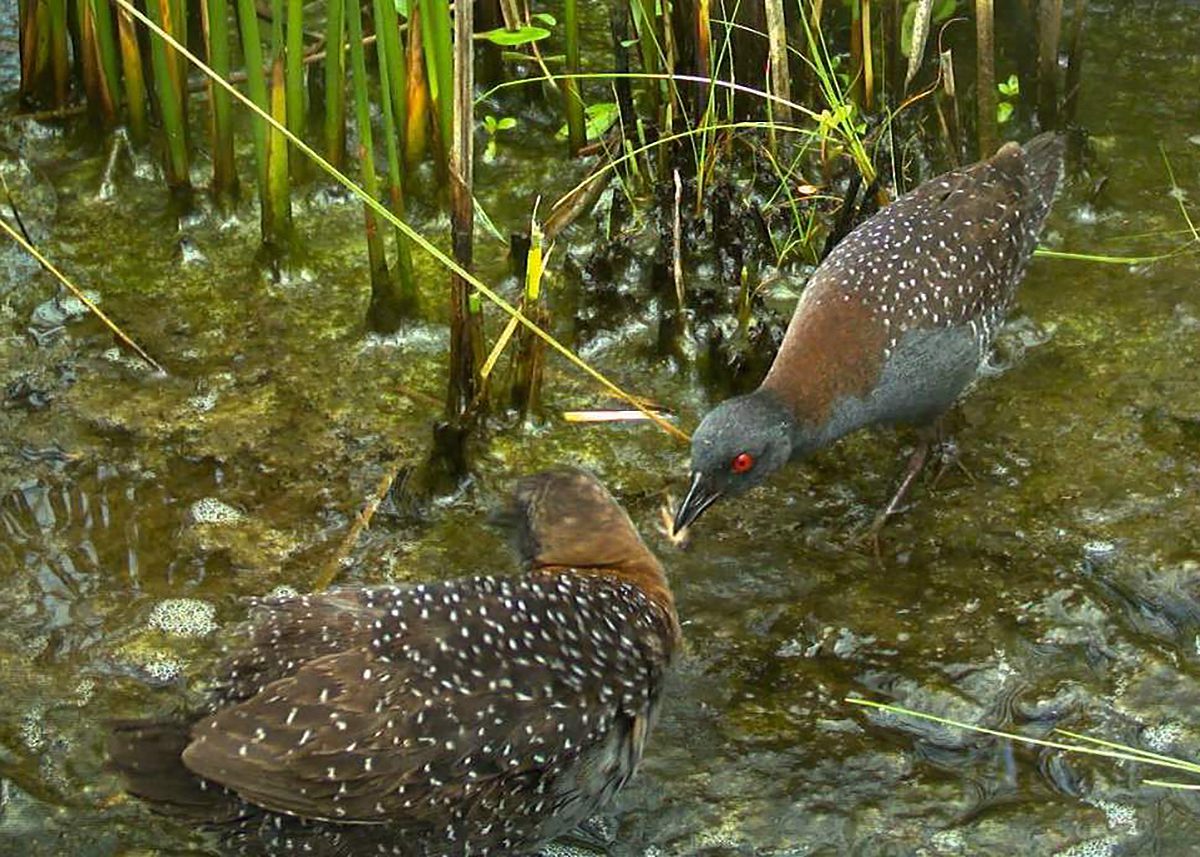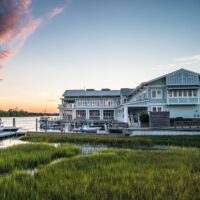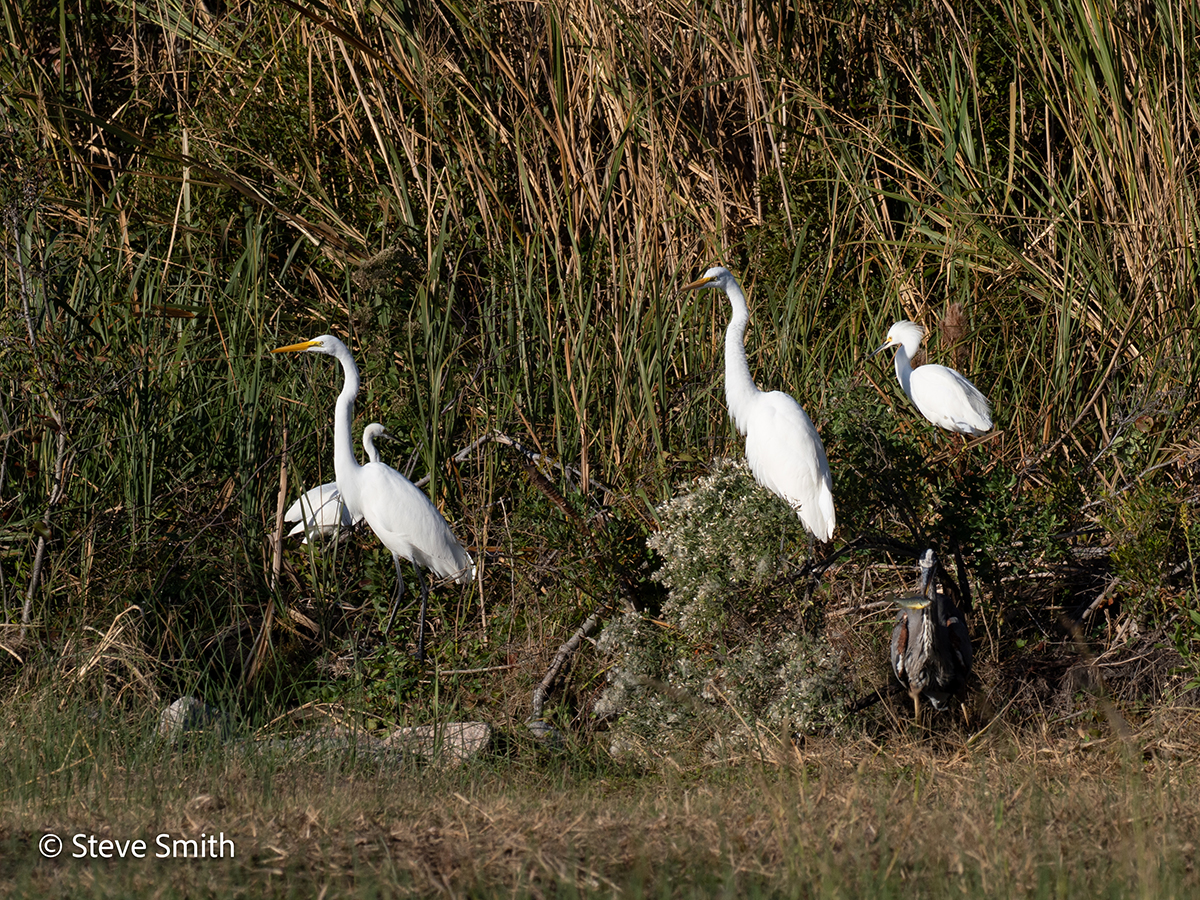
There was a time when the distinctive “kiki-do” call of eastern black rails were a common sound rising up from North Carolina marshes.
Masters of secrecy, these little birds are rarely, if ever, seen.
Supporter Spotlight
They prefer to skirt through the marsh using tunnels dug by rabbits and other small mammals rather than take to the sky. Their nests are typically well concealed close to the ground in the highest part of brackish, saltwater and inland freshwater marshes.
But the habitat that eastern black rails so skillfully use to maintain their privacy is under growing threat from rising ocean waters, more powerful storms, and development and, if their numbers continue to decline, projections are they’ll disappear altogether within 35 years.
The North Carolina Wildlife Resources Commission aims to help these birds, putting forth a management plan to improve the black rails’ habitat by permanently protecting coastal marshes and assisting private landowners with potential habitat creation.
That’s going to take hundreds of acres of additional inland, shallow marsh and high-elevation coastal marsh.
“We think there’s probably less than 40 breeding pairs in North Carolina right now,” said Kacy Cook, a coastal waterbird biologist with the Wildlife Resources Commission.
Supporter Spotlight
The commission is accepting public comment on the Black Rail Management Plan through July 11.
The eastern black rail was listed as threatened under the Endangered Species Act in 2020. The commission lists it as a species of greatest conservation need.
Long gone are the days when eastern black rails were documented in freshwater marshes in the North Carolina mountains and Piedmont. No one has heard their “kiki-do” in the interior part of the state since 2005, Cook said.
Once abundant black rail habitat along the North Carolina has been crowded out by houses, roads and farmed land.
The last remaining pockets of coastal areas where the birds are heard in some places in the Outer Banks (exact locations are kept under wraps to prevent human disturbance) and Cedar Island, an unincorporated area of Carteret County. Even there, surveys reveal a dramatic population decline.
Surveys are conducted throughout the black rails’ breeding cycle by using something called a targeted call-response where biologists play a recording of the “kiki-do” sound and wait for a response from black rails in the survey area.
“You used to be able to hear 70 black rail calling from the causeway,” at Cedar Island, Cook said.
Now, fewer than 10 respond at any given time, she said.
And while that’s not good for the eastern black rail, it’s also indicative of a wider coastal problem.
“Black rails are our signal that our coastal marshes and freshwater wetlands are in trouble, and that makes a difference for a lot of species, and our own wellbeing,” Cook said.
Eastern black rails rely on very shallow water levels in marshes. They have legs that are typically just over one inch long. Their fledglings, roughly the size of cotton balls, are out of the nest within 24 hours of hatching, but they’re not able to fly until about 40 days later.
This is why coastal storm flooding, exacerbated by sea level rise, is a particular threat, because flood waters can wash away the nests, eggs and chicks. One big storm could wipe out the remaining population in North Carolina.
“Those are happening at a rate that is too high for their population to grow,” Cook said.
Lack of fire, which is crucial to maintaining that type of habitat, and agricultural practices that include cutting field borders where black rails like to settle among wet, tall, grassy habitat, are further degrading the birds’ habitat.
“I’m only finding black rails where we have high herbaceous plant diversity. They only use habitats that are very dense herbaceous cover, grasses and flowers with few shrubs and no trees,” Cook said.
The commission’s management plan for black rails includes the creation and restoration of 600 acres of freshwater marsh and 600 acres of additional high-elevation coastal march by 2056.
“What we do for black rails will benefit all of the marsh birds that we have now, including the egrets and the herons and the wood storks. So, working on restoring black rail habitat is going to benefit all of our coastal birds in some way and our seafood. Seventy-five percent of our seafood comes from coastal marshes,” Cook said.







